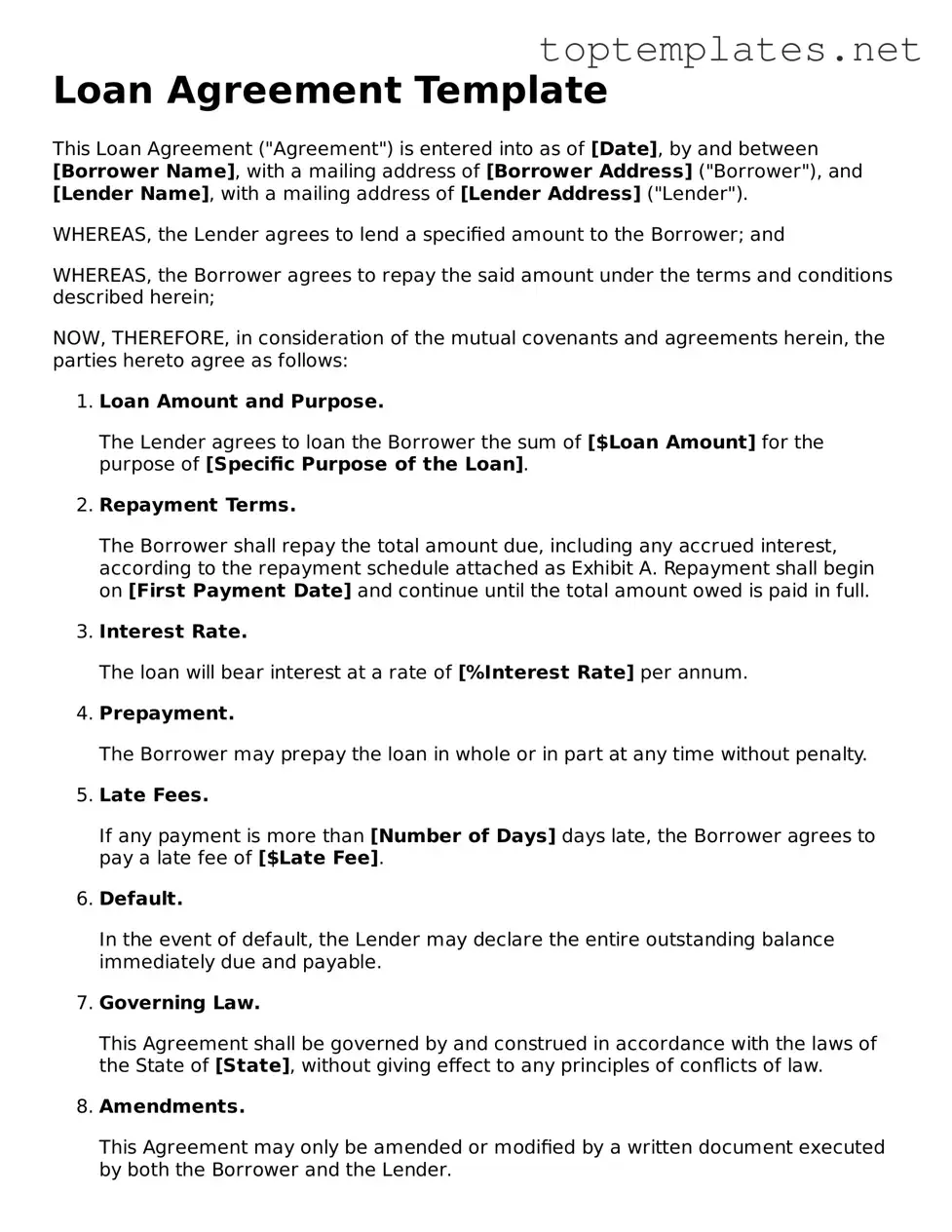What is a Loan Agreement?
A Loan Agreement is a formal contract between a borrower and a lender that outlines the terms and conditions of a loan. The agreement details the loan amount, interest rate, repayment schedule, and the obligations and rights of both parties involved.
Why do I need a Loan Agreement?
Having a Loan Agreement is crucial as it legally binds the lender and the borrower to the terms set forth in the agreement. It protects both parties if there are disagreements or the borrower fails to repay the loan as agreed. It clearly specifies the recourse available to the lender and ensures there is a legal framework for repayment.
What should be included in a Loan Agreement?
A comprehensive Loan Agreement should include the following information: the loan amount, interest rate, repayment schedule, collateral details (if any), late fees, provisions for loan prepayment, and legal recourse in case of default. Additionally, it should detail the obligations and rights of both the borrower and the lender.
Can I write my own Loan Agreement?
Yes, you can draft your own Loan Agreement. However, it's essential to ensure that the agreement complies with state and federal laws and includes all necessary legal provisions to protect your interests. Seeking advice or review by a legal professional can help ensure your agreement is valid and enforceable.
How do I make my Loan Agreement legally binding?
To make a Loan Agreement legally binding, both the borrower and the lender must sign the document. Often, it is also recommended to have the signatures notarized to further authenticate the agreement and protect against disputes. Following state-specific requirements for such agreements can also ensure their enforceability.
Do I need to register my Loan Agreement with any government authorities?
Most personal Loan Agreements do not need to be registered with government authorities. However, depending on your jurisdiction and if the loan involves collateral, you might need to register the agreement or a related statement to protect the collateral. It's advisable to check local laws to confirm registration requirements.
What happens if the borrower defaults on the loan?
If the borrower defaults on the loan, the recourse actions outlined in the Loan Agreement can be pursued. This might include imposing late fees, seizing collateral, or taking legal action to recover the loan amount. The specific steps will depend on the terms of the Loan Agreement and applicable state and federal laws.
Can a Loan Agreement be modified?
Yes, a Loan Agreement can be modified if both the borrower and the lender agree to the changes. The modifications should be made in writing and signed by both parties, similar to the original agreement, to ensure the changes are legally binding.
What is the difference between a Loan Agreement and a Promissory Note?
While both documents are similar in that they outline a promise to pay a debt, a Loan Agreement is more detailed and includes comprehensive terms and conditions of the loan, such as repayment schedule, interest rate, and legal recourse. A Promissory Note, on the other hand, is typically simpler and outlines the basic details of the promise to pay a sum of money. A Loan Agreement provides more protection and clarity for both parties involved.
